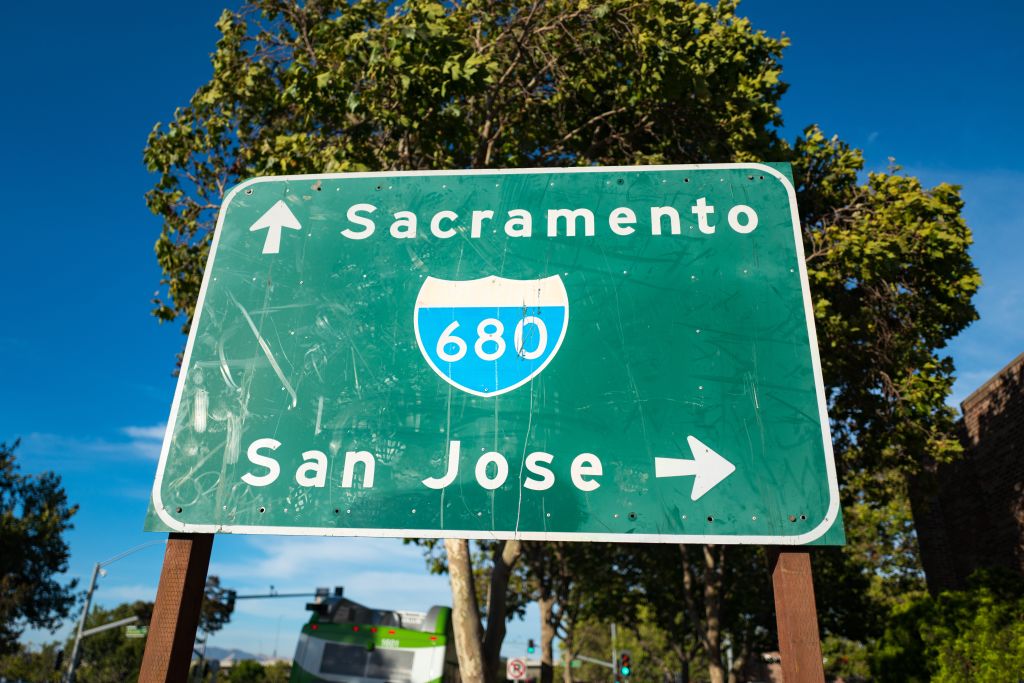After a Tesla driver was killed last month while operating a Model S in "autopilot" mode, a watchdog group is now calling for tighter regulation on self-driving systems in automobiles.
Joshua Brown, who had posted YouTube videos demonstrating and praising the Model S autopilot, was killed when the system failed to avoid crashing into a big-rig on a Florida highway. The National Highway Traffic Safety Administration is investigating the incident, which marked the first death in the U.S. involving a self-driving car.
Consumer Watchdog President Jamie Court wants carmakers to stop developing self-driving systems until the investigation is complete.
"When a car crashes because it can’t tell a truck is there, that’s a serious problem," Court said. "Everyone needs to stop, take a pause and put the technology on hold so we can figure out what went wrong."
Investigators say the Tesla didn't brake when the big-rig turned left in front of it – likely because the car couldn’t distinguish the white side of the truck from the bright sky behind it.
"It reaffirms concerns that this technology is not up to snuff," Court said.
Tesla Motors, headquartered in Palo Alto, released a statement saying its cars have driven an estimated 120 million miles on autopilot. But it also said the system is designed in such a way that drivers should remain in control of the vehicle at all times.
Local
Autopilot "is an assist feature that requires you to keep your hands on the steering wheel at all times," and "you need to maintain control and responsibility for your vehicle” while using it.
Tesla Motors' full statement is below:
A Tragic Loss
The Tesla Team June 30, 2016
We learned yesterday evening that NHTSA is opening a preliminary evaluation into the performance of Autopilot during a recent fatal crash that occurred in a Model S. This is the first known fatality in just over 130 million miles where Autopilot was activated. Among all vehicles in the US, there is a fatality every 94 million miles. Worldwide, there is a fatality approximately every 60 million miles. It is important to emphasize that the NHTSA action is simply a preliminary evaluation to determine whether the system worked according to expectations.
Following our standard practice, Tesla informed NHTSA about the incident immediately after it occurred. What we know is that the vehicle was on a divided highway with Autopilot engaged when a tractor trailer drove across the highway perpendicular to the Model S. Neither Autopilot nor the driver noticed the white side of the tractor trailer against a brightly lit sky, so the brake was not applied. The high ride height of the trailer combined with its positioning across the road and the extremely rare circumstances of the impact caused the Model S to pass under the trailer, with the bottom of the trailer impacting the windshield of the Model S. Had the Model S impacted the front or rear of the trailer, even at high speed, its advanced crash safety system would likely have prevented serious injury as it has in numerous other similar incidents.
It is important to note that Tesla disables Autopilot by default and requires explicit acknowledgement that the system is new technology and still in a public beta phase before it can be enabled. When drivers activate Autopilot, the acknowledgment box explains, among other things, that Autopilot “is an assist feature that requires you to keep your hands on the steering wheel at all times," and that "you need to maintain control and responsibility for your vehicle” while using it. Additionally, every time that Autopilot is engaged, the car reminds the driver to “Always keep your hands on the wheel. Be prepared to take over at any time.” The system also makes frequent checks to ensure that the driver's hands remain on the wheel and provides visual and audible alerts if hands-on is not detected. It then gradually slows down the car until hands-on is detected again.
We do this to ensure that every time the feature is used, it is used as safely as possible. As more real-world miles accumulate and the software logic accounts for increasingly rare events, the probability of injury will keep decreasing. Autopilot is getting better all the time, but it is not perfect and still requires the driver to remain alert. Nonetheless, when used in conjunction with driver oversight, the data is unequivocal that Autopilot reduces driver workload and results in a statistically significant improvement in safety when compared to purely manual driving.
The customer who died in this crash had a loving family and we are beyond saddened by their loss. He was a friend to Tesla and the broader EV community, a person who spent his life focused on innovation and the promise of technology and who believed strongly in Tesla’s mission. We would like to extend our deepest sympathies to his family and friends.



